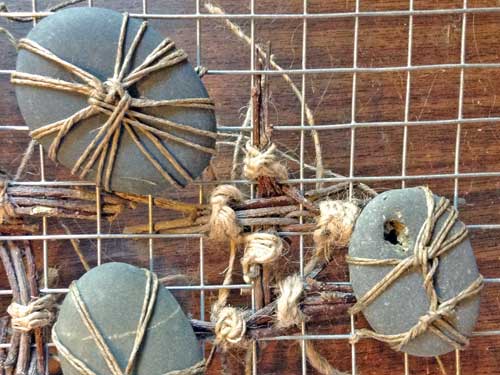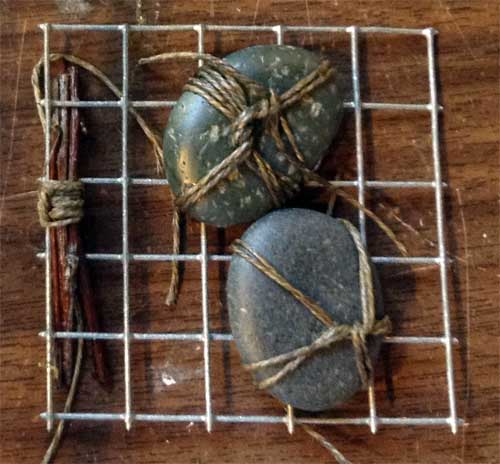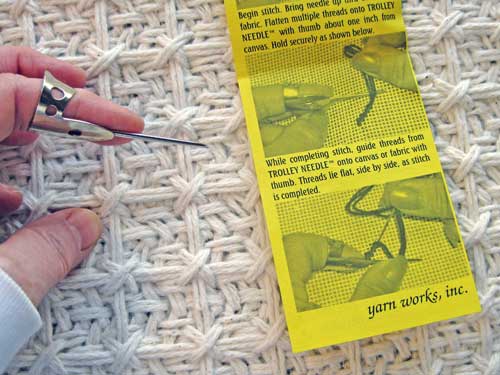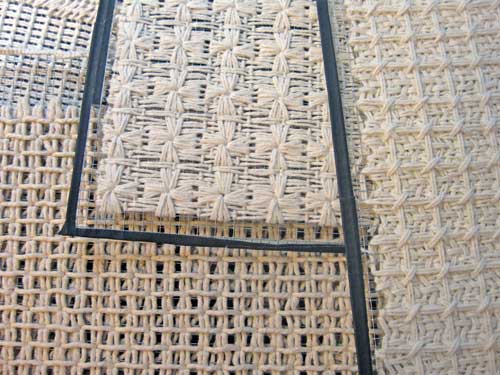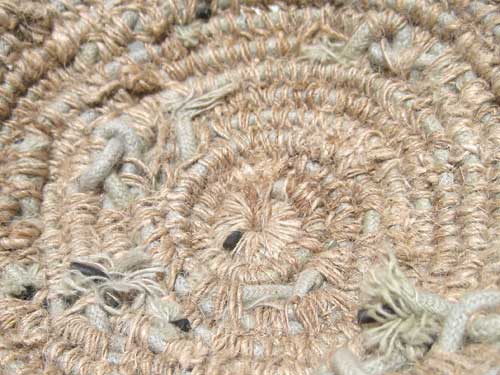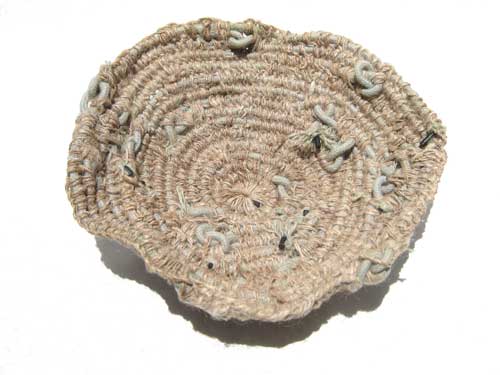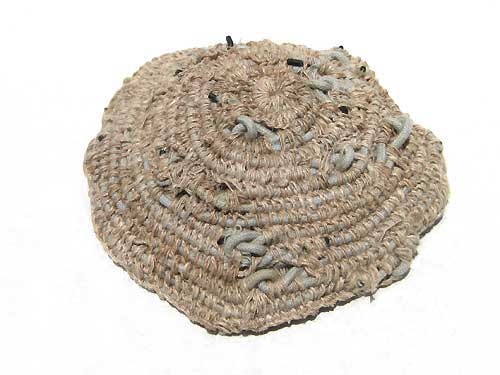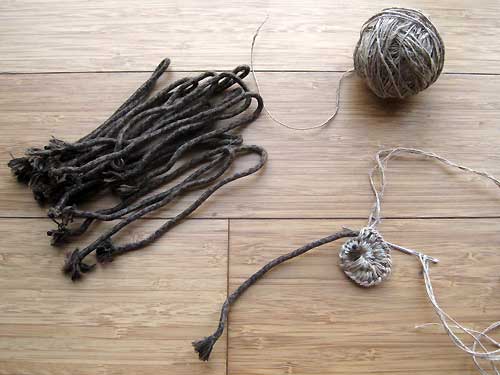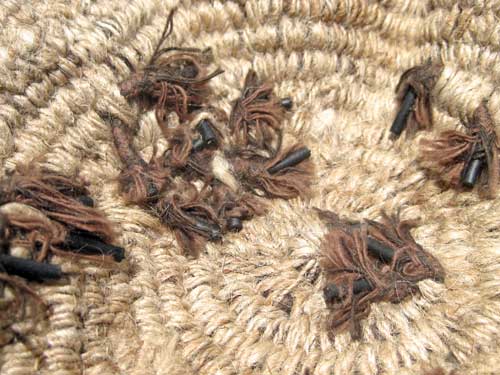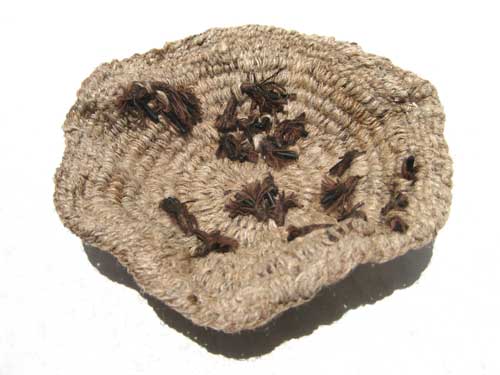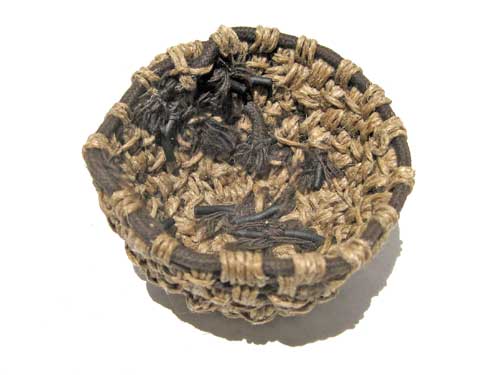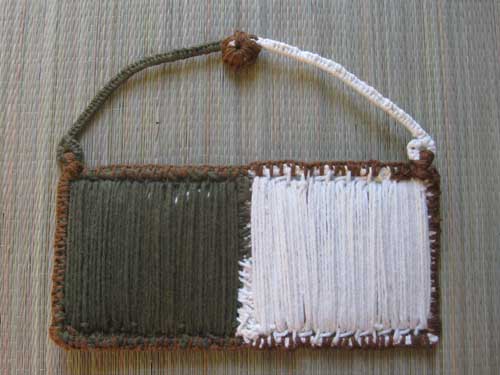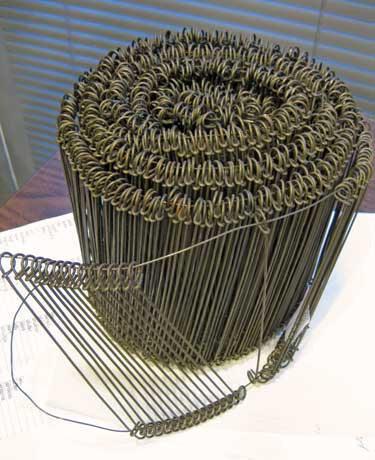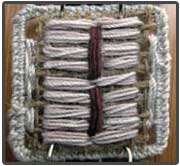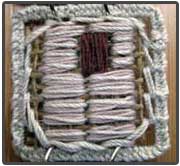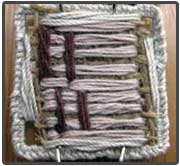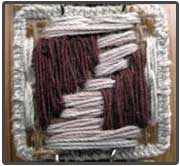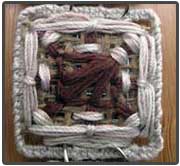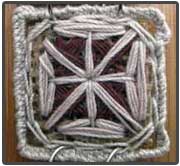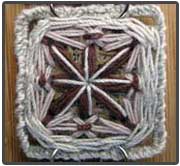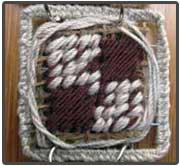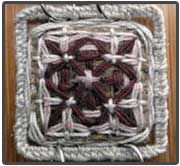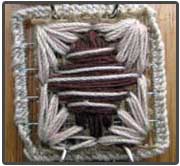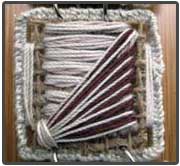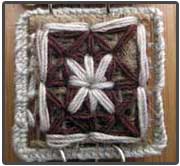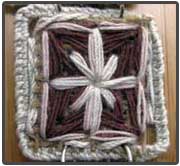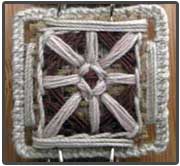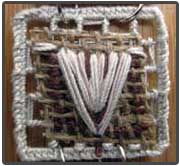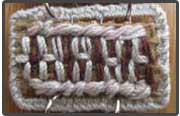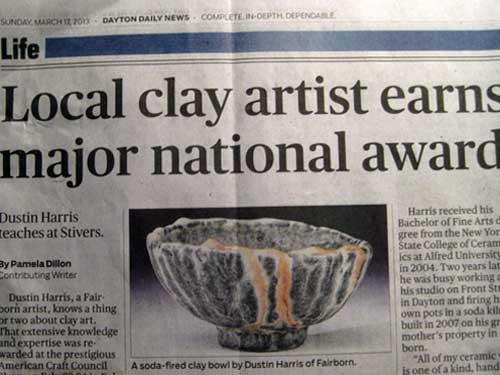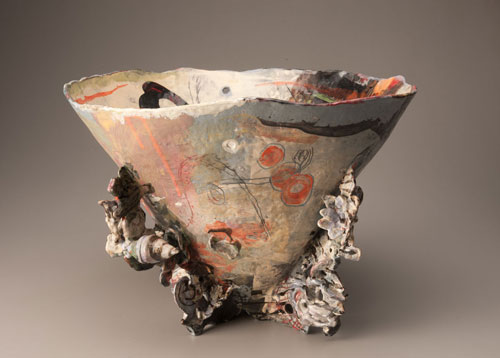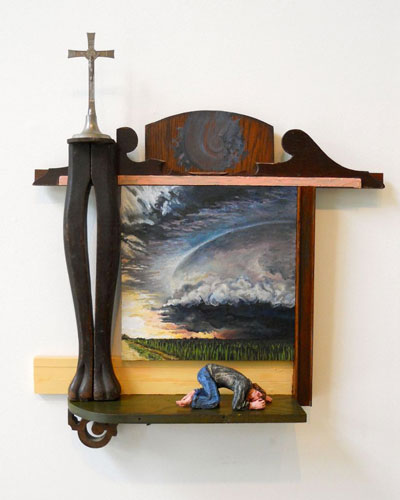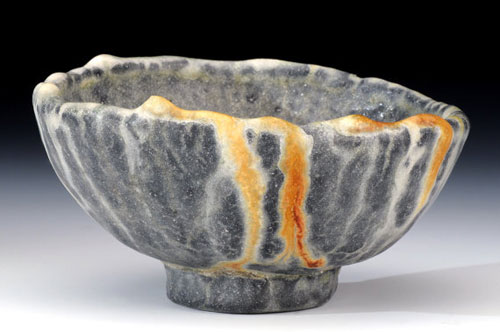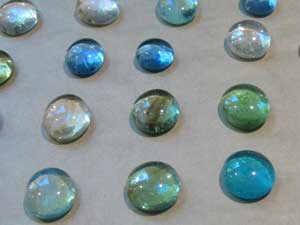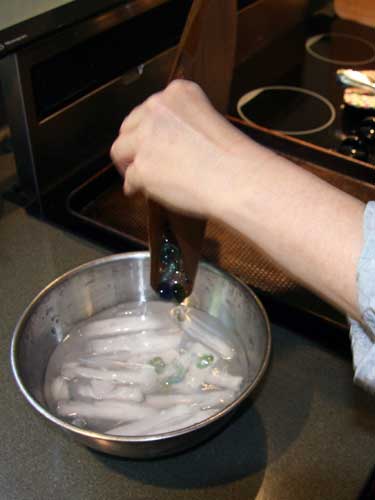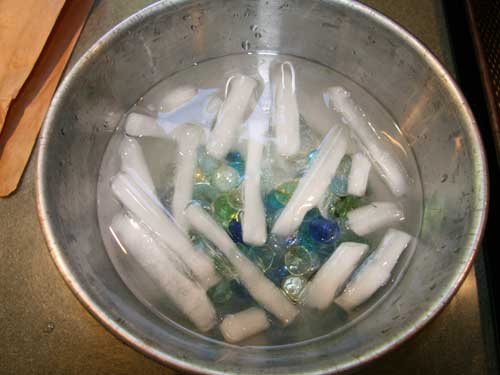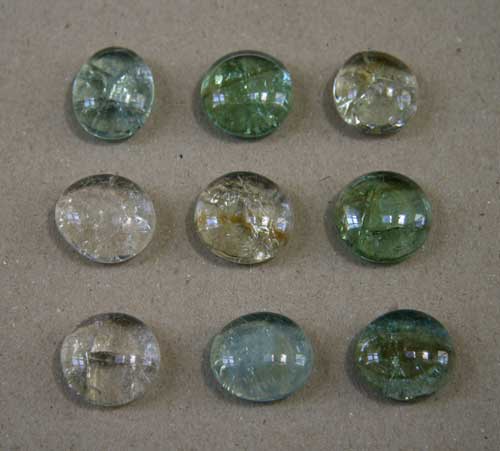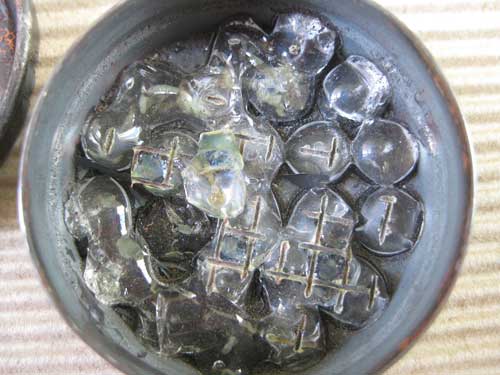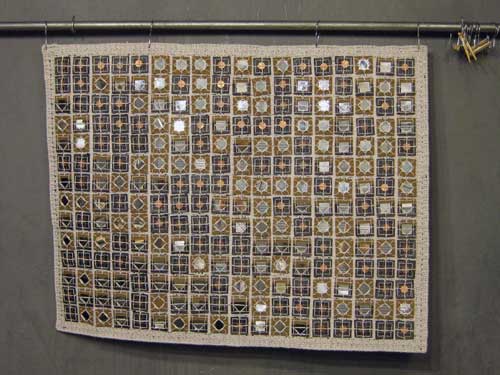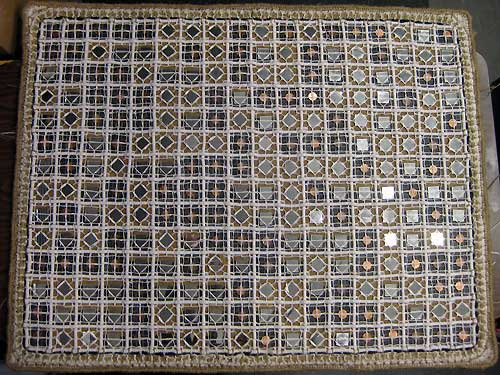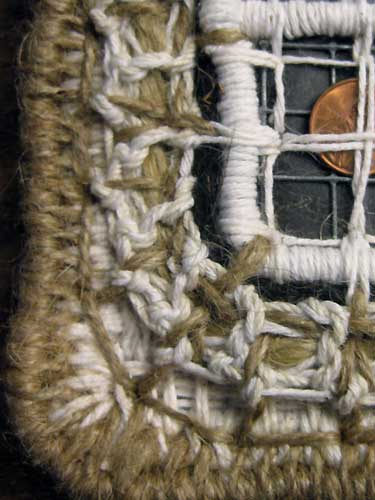The work started with my continued interest in words and language.
Most kids are taught the Sticks and Stones nursery rhyme.
Sticks and stones may break my bones but words will never hurt me?
I added a question mark. Words are used every day to hurt people.
The nursery rhyme is in Morse Code with the substitution of a bundle of sticks for each dot and dash. Each bundle has three sticks and is bound with nettle. A vertical orientation is a dot, horizontal is a dash.

Code for A, B, and the Question Mark.
Each letter spans 4 squares by 4 squares. I often use Flash for layout. Make a symbol for each code component, with easy peasy replace. It is a quick way to see potential problems before making a paper and pencil sketch.
In addition to the bundles for the code in each 4×4 section, there will also be a stone bound with hemp. This is a detail of some of the completed work. I wait until I am finished with all of the binding before addressing any long strings on the back.
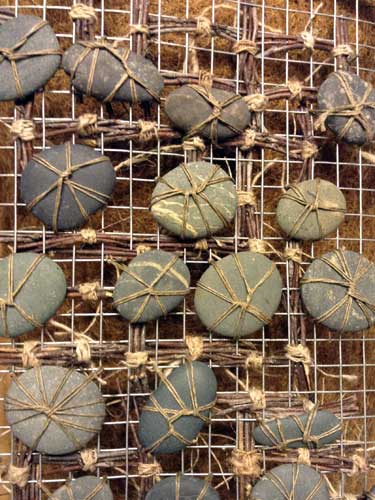
The size of the stone will be dictated by the code. Letters can have 1, 2, 3, or 4 dots/dashes. Fewer code bundles allow for larger stones. The question mark has 6 bundles for the code.
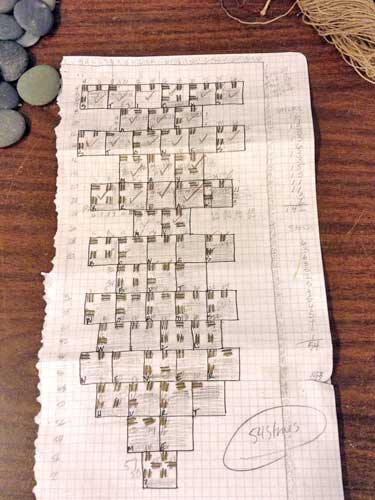
Sketch in Use. I always use paper and pencil for my working sketch. I can write on it. Mark off bits when completed.
The sketch has each square numbered. I taped and numbered the edge of the metal mesh. It makes work easier with fewer mistakes. Depending on the binding, tearing out a mistake can take longer than the actual binding time. The tape is also good for preventing possible cuts. The metal mesh can be quite sharp.

The piece will be fairly heavy. The plan is to sandwich a piece of coco fiber blanket between the code piece and an additional piece of metal mesh. Rather like the three layers of a typical quilt. If I stitched through all three layers or hand tied them together, it would be even closer to quilt making. I always wanted to make a quilt, but not keen on cutting little bits of flat fabric and then stitching them together.
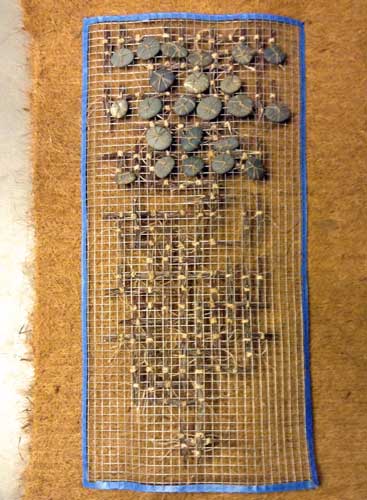
Things to do–Thinking about filling some of the open space of the mesh, weaving in nettle or hemp. It probably would feel more like a piece of fabric. Still want to see the coco fiber, especially the raw edges.
There are 3 squares allotted for the border. Haven’t planned what type of binding or embroidery to use. Need to see the sticks and stones bound in before making that decision.
